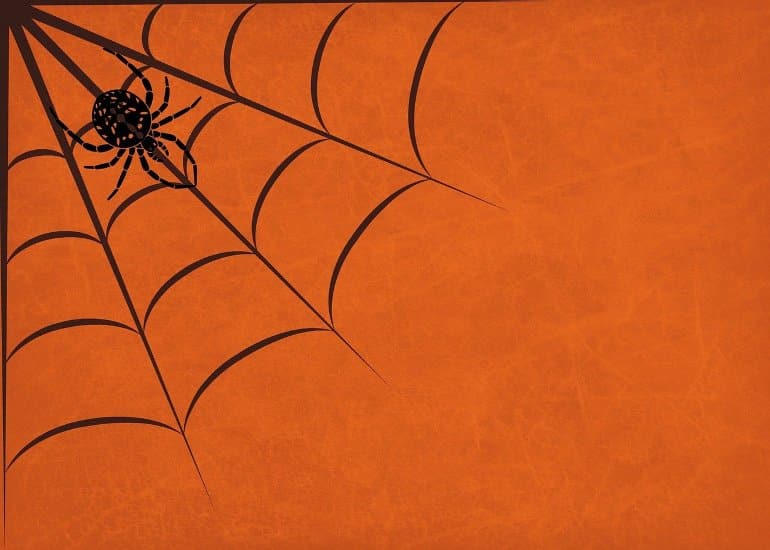Summary: Jumping spiders can distinguish between living and non-living objects based upon their movement, a new study reports.
Source: Harvard
Add this to the list of real-life spidey senses: Harvard researchers have shown that jumping spiders are able to tell the difference between animate objects and inanimate objects — an ability previously known only in vertebrates, including humans.
Using a specialized treadmill system and a point-light display animation, the team of scientists found that these spiders are able to recognize biological motion. This type of motion refers to the visual movements that come from living organisms when they are moving. The visual cue is how people, even babies, can tell someone is another person just by the way their bodies move. Many animals can do this, too.
The ability, which is critical for survival, is evolutionarily ancient since it is so widespread across vertebrates. The study from the Harvard team is believed to be the first demonstration of biological motion recognition in an invertebrate. The findings pose crucial questions about the evolutionary history of the ability and complex visual processing in non-vertebrates.
“[It] opens the possibility that such mechanisms might be widespread across the animal kingdom and not necessarily related to sociality,” the researchers wrote in the paper, which published in PLOS Biology on Thursday.
The study was authored by a team of researchers who were John Harvard Distinguished Science Fellows during the time of the study or are current fellows. Massimo De Agrò, now a researcher at an animal comparative economics lab in Regensburg, Germany, led the work. Paul Shamble, a current fellow, and Daniela C. Rößler, and Kris Kim, former fellows, co-authored the study.
The researchers chose jumping spiders to test biological motion cues because the animals are among the most visually adept of all arthropods. With eight eyes, for example, vision plays a central role in a wide range of behaviors.
They placed the jumping spiders, a species called Menemerus semilimbatus, into a forced choice experiment. They suspended the spiders above a spherical treadmill so their legs could make contact with it. The spiders were kept in a fixed position so only its legs could move, transferring its intended direction to the sphere which spun freely because of a constant stream of compressed air shooting up below it.
(Friendly disclaimer: No spiders were harmed during the experiment and all were freed in the same place they were captured afterwards.)
Once in position, the spiders were presented two animations as stimuli. The animations were called point-light displays, each consisting of a dozen or so small lights (or points) that were attached to key joints of another spider so they could record its movements. The body itself is not visible, but the digital points give a body-plan outline and impression of a living organism. In humans, for example, it only takes about eleven dots on the main joints of the body for observers to correctly identify it as another person.
For the spiders, the displays followed the motion of another spider walking. Most of the displays gave the impression of seeing a living animal. Some of the displays were less real than others and one, called a random display, did not give the impression it was living.

The researchers then observed how the spiders reacted and which light display they turned toward on the treadmill. They found the spiders reacted to the different point-light displays by pivoting and facing them directly, which indicated that the spiders were able to recognize biological motion.
Curiously, the team found the spiders preferred rotating towards the more artificial displays and always toward the random one when it was part of the choice. They initially thought they would turn more toward the displays simulating another spider and possible danger, but the behavior made sense in the context of jumping spiders and how their secondary set of eyes work to decode information.
“The secondary eyes are looking at this point-light display of biological motion and it can already understand it, whereas the other random motion is weird and they don’t understand what’s there,” De Agrò said.
The researchers hope to look into biological motion recognition in other invertebrates such as other insects or mollusks. The findings could lead to greater understanding of how these creatures perceive the world, De Agrò said.
About this neuroscience research news
Source: Harvard
Contact: Juan Siliezar – Harvard
Image: The image is in the public domain
Original Research: Open access.
“Perception of biological motion by jumping spiders” by Massimo De Agrò et al. PLOS Biology
Abstract
Perception of biological motion by jumping spiders
The body of most creatures is composed of interconnected joints. During motion, the spatial location of these joints changes, but they must maintain their distances to one another, effectively moving semirigidly. This pattern, termed “biological motion” in the literature, can be used as a visual cue, enabling many animals (including humans) to distinguish animate from inanimate objects.
Crucially, even artificially created scrambled stimuli, with no recognizable structure but that maintains semirigid movement patterns, are perceived as animated.
However, to date, biological motion perception has only been reported in vertebrates.
Due to their highly developed visual system and complex visual behaviors, we investigated the capability of jumping spiders to discriminate biological from nonbiological motion using point-light display stimuli. These kinds of stimuli maintain motion information while being devoid of structure.
By constraining spiders on a spherical treadmill, we simultaneously presented 2 point-light displays with specific dynamic traits and registered their preference by observing which pattern they turned toward. Spiders clearly demonstrated the ability to discriminate between biological motion and random stimuli, but curiously turned preferentially toward the latter.
However, they showed no preference between biological and scrambled displays, results that match responses produced by vertebrates. Crucially, spiders turned toward the stimuli when these were only visible by the lateral eyes, evidence that this task may be eye specific.
This represents the first demonstration of biological motion recognition in an invertebrate, posing crucial questions about the evolutionary history of this ability and complex visual processing in nonvertebrate systems.






